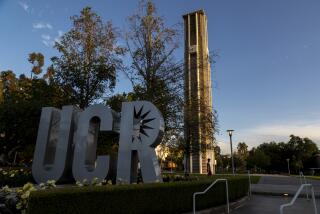Key Physical Evidence Is Presented in Sniper Trial
VIRGINIA BEACH, Va. — A procession of federal agents on Wednesday detailed the government’s key physical evidence against serial sniper suspect John Allen Muhammad -- from the assault rifle linked to 11 slayings to a computer that contained chilling skull-and-crossbones icons mapping spots where victims died.
Muhammad’s DNA was recovered at several murder scenes, the law enforcement technicians testified; a trace similar to the suspect’s also was found on the rear sight of the murder weapon. Although FBI forensic examiner Brendan Shea testified that there was a high likelihood that the DNA trace was Muhammad’s, he could not say so definitively.
The computer and Bushmaster .223-caliber rifle were found in Muhammad’s Chevrolet Caprice, which was littered with identifiable fingerprints. But only those belonging to 18-year-old Lee Boyd Malvo, Muhammad’s alleged accomplice, were found on the laptop and the rifle itself, authorities said.
FBI print specialist Charles Colman said that although a fingerprint found on the rifle’s scope could not be identified, two other prints detected on the gun’s grip were unmistakable.
“The finger and palm prints both belonged to Lee Malvo,” Colman said.
The high-powered rifle looms as formidable evidence against Malvo, who goes on trial in the sniper killings next week. But it also provides critical circumstantial evidence against Muhammad -- not only because of the possible DNA match, but because the weapon was found in his car.
“The rifle is the most important silent witness in this case,” said Richmond trial attorney Steven D. Benjamin, president-elect of the Virginia Assn. of Criminal Defense Lawyers. “The fact that it was found in Muhammad’s possession makes it compelling proof -- even without fingerprints.”
Prince William County prosecutors began rolling out their forensic experts Wednesday as part of the final phase of evidence after three weeks of testimony from shooting survivors, witnesses, police investigators and relatives of 11 of the 13 people killed during last year’s sniper rampage.
Muhammad faces a possible death sentence in the killing of Dean H. Meyers, a Maryland civil engineer gunned down Oct. 9, 2002, at a gas station in Manassas, Va. Prosecutors have methodically traced the killings from the Deep South up to the Washington, D.C., area, where residents were terrorized for three weeks before Muhammad and Malvo were arrested.
On the hard drive of the Sony Vaio laptop, FBI agents found a map showing a route near the Shell station where Meyers was shot to death. The map entry was made on the same day as the Meyers shooting. On a similar map that showed the Home Depot where FBI analyst Linda Franklin was gunned down that Oct. 12, a skull-and-cross icon is accompanied by the note: “Good One.”
After only sparingly taking on the emotional and graphic accounts of earlier witnesses, Muhammad’s defense team tried to pounce Wednesday on some of the more abstract accounts provided by government experts.
They questioned the statistical probability ratios that DNA specialists used to justify claims that some of Muhammad’s genetic traces probably were left on the rifle and on other evidence, including a bag of raisins. Defense lawyer Jonathan Shapiro ridiculed one FBI genetic specialist as a “bug expert” after she insisted that tiny insect carcasses had proved useful in placing Muhammad and Malvo at one shooting site.
But the FBI witnesses appeared unflappable as they detailed the trove of evidence taken from Muhammad’s car and carefully sifted from the earth around shooting scenes. Several FBI examiners said Muhammad left an electronic trail on the computer, which was stolen from restaurant owner Paul LaRuffa after he was shot six times and left for dead. Now recovered, LaRuffa testified against Muhammad earlier in the trial.
On the laptop’s hard drive, FBI computer specialists found maps of at least eight shooting death scenes and a file that used the same “Call me God” phrase found on three sniper ransom notes.
FBI computer expert John Hair said the entries apparently were made by a computer user identified as “L.” That user was also identified on the laptop hard drive as “Muhammad,” Hair said.
On a separate electronic organizer recovered from the sniper suspect’s car, FBI agents found an entry that threatened death to several radio hosts and law enforcement phone hotline personnel.
More to Read
Sign up for Essential California
The most important California stories and recommendations in your inbox every morning.
You may occasionally receive promotional content from the Los Angeles Times.










